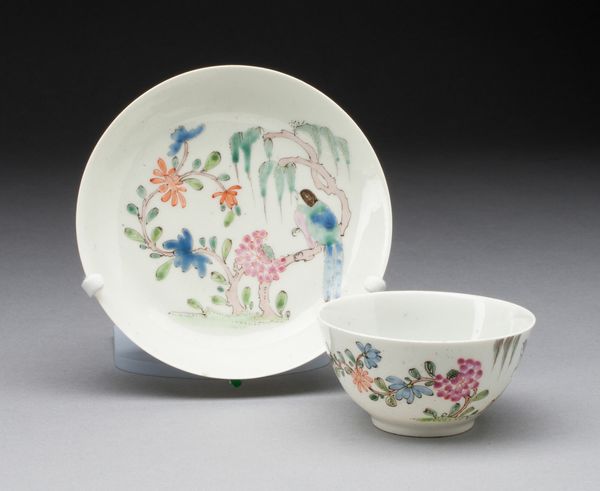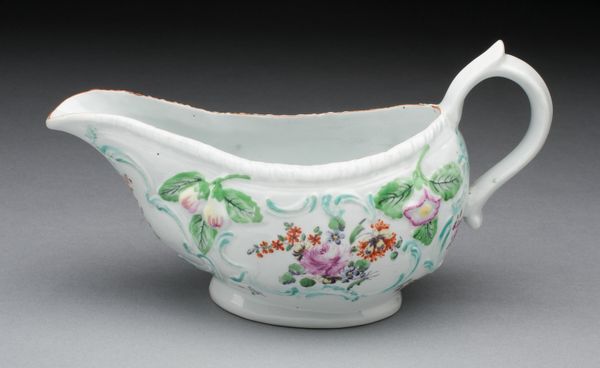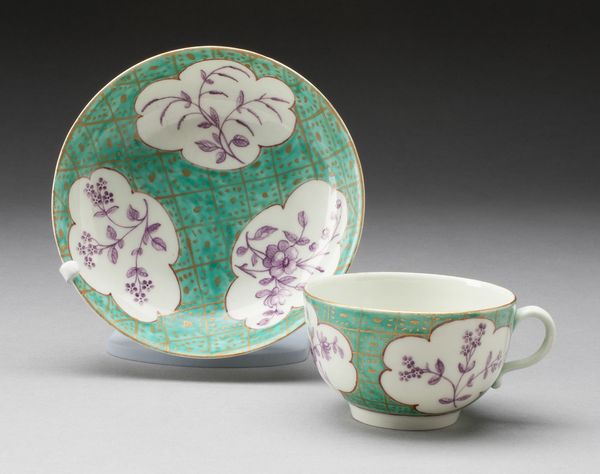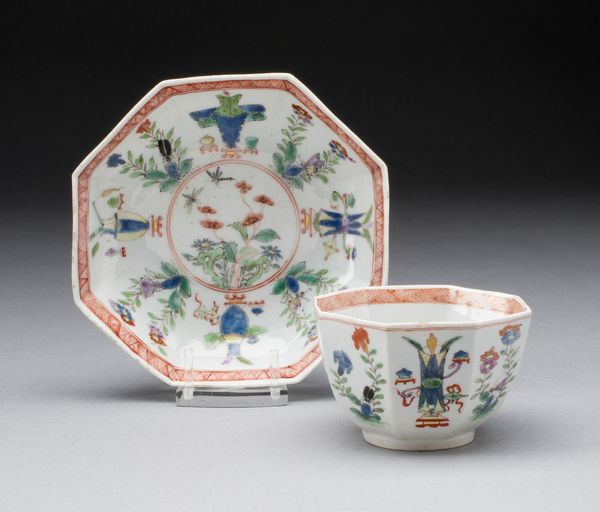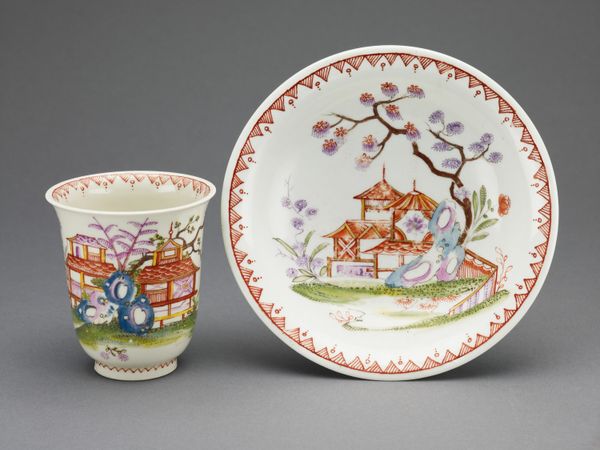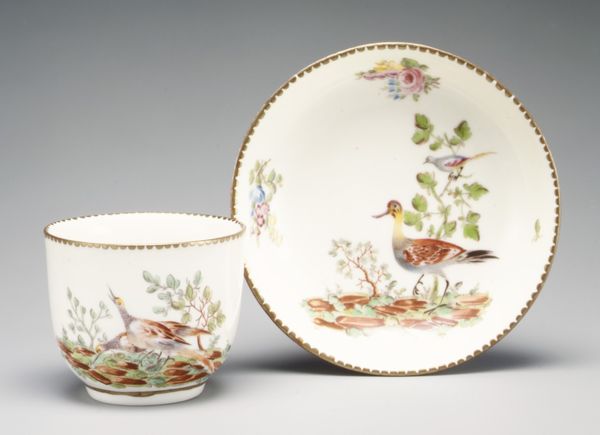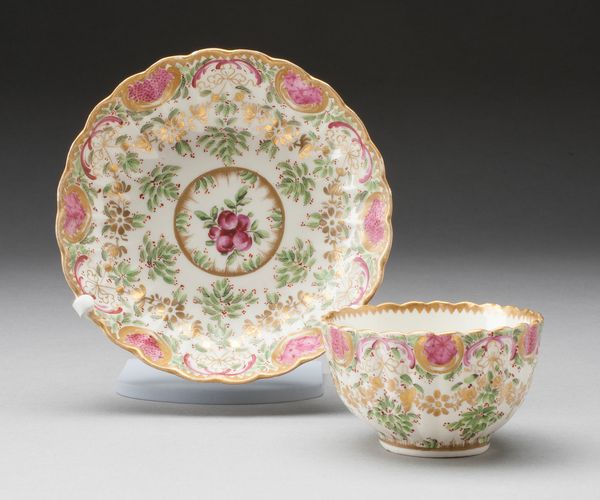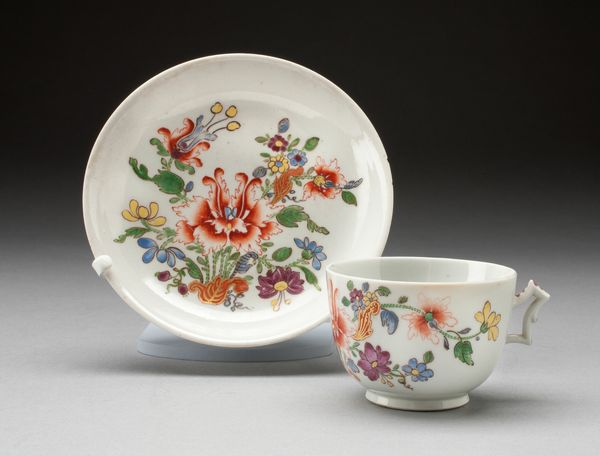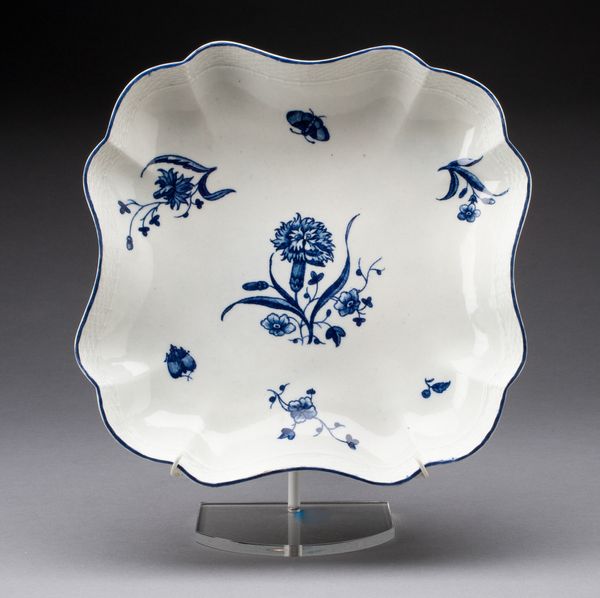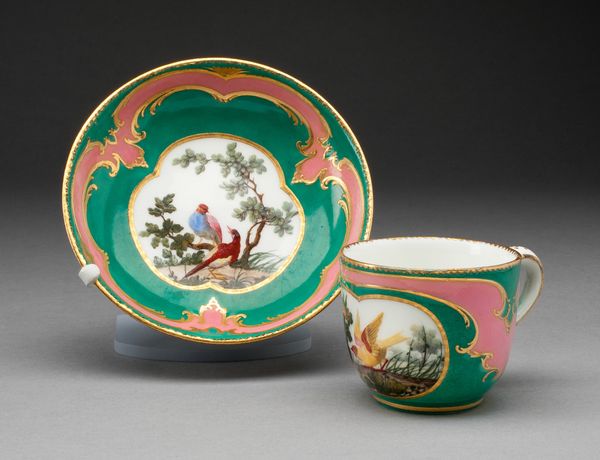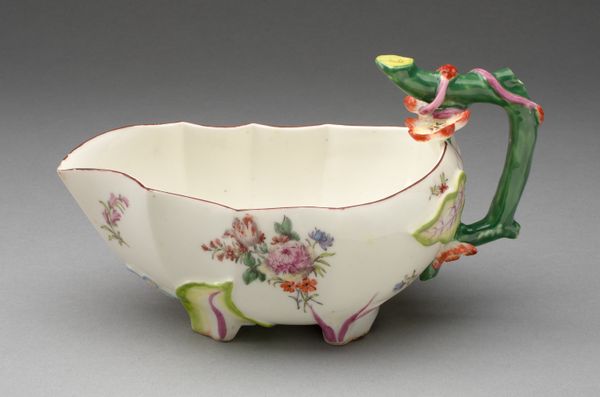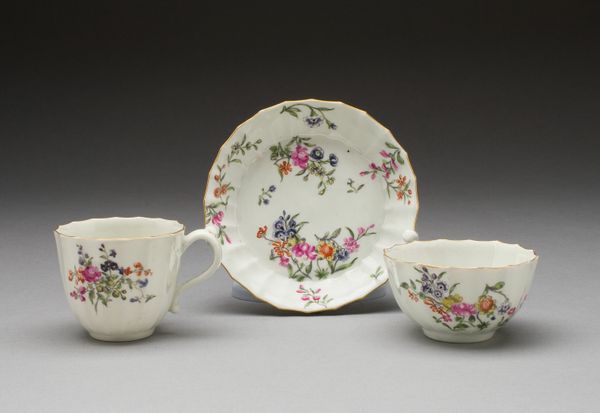
ceramic, porcelain, sculpture
#
ceramic
#
porcelain
#
sculpture
#
decorative-art
#
miniature
#
rococo
Dimensions: Height (mustard pot .1a, b): 3 9/16 in. (9 cm); Overall (stand .2): 1 1/2 × 6 3/4 × 5 1/4 in. (3.8 × 17.1 × 13.3 cm)
Copyright: Public Domain
Curator: This object, a mustard pot with a cover and stand, dates from between 1740 and 1760. It’s a charming example of Chantilly porcelain and currently resides at the Metropolitan Museum of Art. Editor: It has an immediate lightness, a sense of playful luxury. That robin's-egg blue is just irresistible! It speaks volumes about a very specific era, a society absorbed in delicate beauty. Curator: Indeed, it embodies the Rococo style, a movement characterized by asymmetry and ornamentation, which is often read as feminine. Looking at the miniature floral paintings set within white reserves, there is also symbolic importance tied to flowers. In this case we can see a yellow rose that often symbolizes friendship or fading love. Editor: But "fading love" for whom? Considering the elitist culture that produced such objects, can we overlook the oppressive socio-economic realities of 18th-century France? The beauty of the craftsmanship stands in stark contrast to the lives of those who would never even see it. Curator: Well, certainly, luxury goods can often represent cultural inequities. However, isn't there something valuable in acknowledging the continuity of the symbols themselves? The urge to beautify daily life is, after all, deeply human, reflecting complex social hierarchies and class structures, as you point out, but also persistent ideals. The image of the flower or color for instance might be read now within our contemporary settings and still evoke powerful responses from our minds, reminding us of collective memories about past and present relations between humans. Editor: That's precisely what makes engaging with historical art so vital. By interrogating its role within unequal systems, we expose those structures to contemporary critique. Who got to decide what was beautiful, and whose stories are excluded by these definitions? It reminds us that such a piece speaks less about 'human' values and more about who can afford to impose theirs onto the broader society. Curator: I agree. Engaging with art’s complex history—its continuities and its fractures—ultimately enriches our own cultural and psychological landscapes. Editor: Precisely, prompting critical awareness is a good step. And acknowledging beauty while being honest about its baggage: that’s true progress, I believe.
Comments
No comments
Be the first to comment and join the conversation on the ultimate creative platform.
